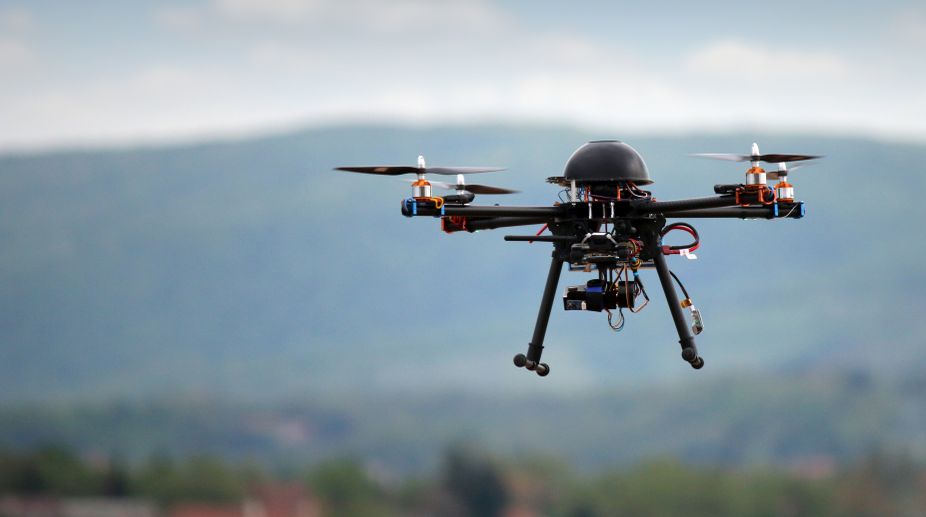Drones and thermal cameras will be part of an advanced surveillance mechanism that will be put in place to check poaching and other anti-wildlife activities in prominent reserves of Rajasthan including Sariska and Ranthambore.
Technology-enabled surveillance and anti-poaching system will also be in place at Mukandara hills tiger reserve (Kota and nearby region), Jawai bandh (Pali) leopard conservation reserve and Jhanana nature park (Jaipur).
Few wildlife reserves in Madhya Pradesh, Assam and Uttarakhand already have a similar system but the desert state of Rajasthan claims to be the first state to introduce this on a large scale.
Advertisement
"The Wildlife Surveillance and Anti-Poaching System (WS and APS) is aimed at effective monitoring and surveillance of wildlife animals at selected locations and we plan to complete the project of advanced monitoring by December this year, Akhil Arora, Principal Secretary of Planning, IT and Communication department, told PTI.
Besides improving the forest department s monitoring capabilities, the project would help the authorities in conservation of tiger and other wildlife animals, identification of poaching or other wildlife crime prone areas, checking infiltration and illegal activities and in effective decision making.
The department of IT has invited tenders for the hi-tech project.
The project will cover as many as 1173 critical areas of Ranthambhore (283 areas), Sariska Tiger Reserve (420), Mukundra Hills Tiger Reserve (417), Jawaibhag Leopard Conservation Reserve (20) and Jhalana Nature Park (33).
Another official of the IT department said the project will have two components; one will be of static infrastructure including watch towers and second will be drone cameras.
Under the project, the official said, normal image/video capturing cameras and thermal sensing cameras will be used with wireless network.
Cameras will be connected to local control room which will be set up at each location for the data collection and analysis.
Local control rooms will be connected to divisional/central control room.
In forest areas, activities during night remain high as compared to day and night vision through thermal cameras will help in monitoring activities more effectively.The cameras will provide live feed of tiger, panther, leopard and others activities in the covered area, she said.
Graphical alerting on geo maps, remotely controllable camera operations round-the-clock, provision of recording from the control room, bookmark creation for immediate surveillance of vulnerable points, LED display and other facilities at control rooms will be the features of this project.
UAVs will also be integrated in the project through which wildlife monitoring, boundary monitoring, anti-poaching/ anti-theft operations will be conducted.
Wildlife species counting, habitat and range mapping activities and monitoring at a time of natural calamity will also be done by the drone cameras.
It is not only the surveillance of wildlife animals, but poaching and other such activities also made the authorities to contemplate the technology-based system.
Following many incidents of wildlife crime in the last one decade, the state government felt a need to check this menace through technology.
The incidents are not only limited to wildlife smuggling, poaching, human interface in forest areas but there are many incidents which could not be notified due to less number of resources, huge forest area and highly active poachers and criminals in the area, according to official sources.
The new project will not completely eliminate the requirement of manual monitoring but will enhance the surveillance capacity of the workforce of the forest department.
"The project will help us in effective monitoring and quick decision making.The monitoring is done manually and this will continue but the project will enhance proficiency and capabilities of our workforce, Y K Sahu, Director of the Ranthambhore National Park, said.
Monitoring of big cats' territories will also be done effectively while the system will also help the workforce to effectively deal with human-animal conflict.
In recent time, six persons were killed in separate cases of panther attack in Alwar s Sariska and it took several days for the department to identify and catch the leopard considered dangerous for human life.
In Ranthambhore, ten big cats that included seven female and three male tigers have remained untraceable in the last five years and such incidents will be easy to deal with the technology-based solutions.
Forests in Rajasthan cover an area of 32,638.74 sq km, which is 9.54 per cent of the total geographical area of the state.
Advertisement










